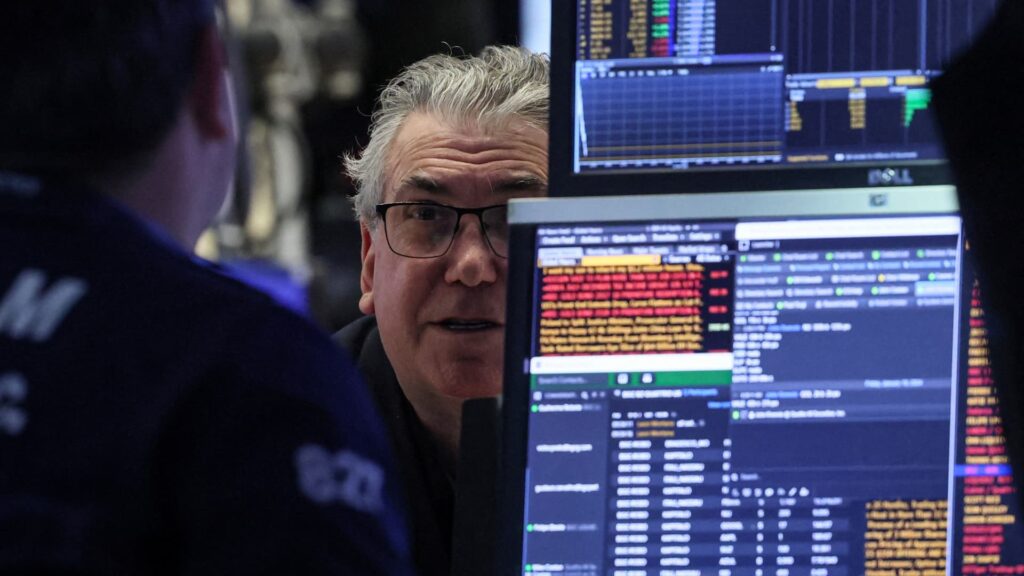Traders work on the floor at the New York Stock Exchange (NYSE) in New York City, U.S., January 19, 2024.
Brendan Mcdermid | Reuters
Markets have become less convinced that the Federal Reserve is ready to press the button on interest rate cuts, an issue that cuts at the heart of where the economy and stocks are headed.
Two big economic reports coming up this week could go a long way toward determining at least which way the central bank policymakers could lean — and how markets might react to a turn in monetary policy.
Investors will get their first look at the broad picture of fourth-quarter economic growth for 2023 when the Commerce Department releases its initial gross domestic product estimate on Thursday. Economists surveyed by Dow Jones are expecting the total of all goods and services produced in the U.S. economy to grow at a 1.7% pace for the final three months of 2023, which would be the slowest growth since the 0.6% decline in Q2 of 2022.
A day later, the Commerce Department will release the December reading on the personal consumption expenditures price index, a favorite Fed inflation gauge. The consensus expectation for core PCE prices, which exclude the volatile food and energy components, is 0.2% growth for the month and 3% for the full year.
Both data points should garner a lot of attention, particularly the inflation numbers, which have been trending towards the Fed’s 2% goal but aren’t there yet.
“That’s the thing that everybody should be watching to determine what the Fed’s rate path will end up being,” Chicago Fed President Austan Goolsbee said during an interview Friday on CNBC. “It’s not about secret meetings or decisions. It’s fundamentally about the data and what will enable us to become less restrictive if we have clear evidence that we’re on the path to get” inflation back to target.
Lowered rate-cut outlook
The releases come amid a market snapback about where the Fed is heading.
As of Friday afternoon, trading in the fed funds futures market…
Read the full article here





